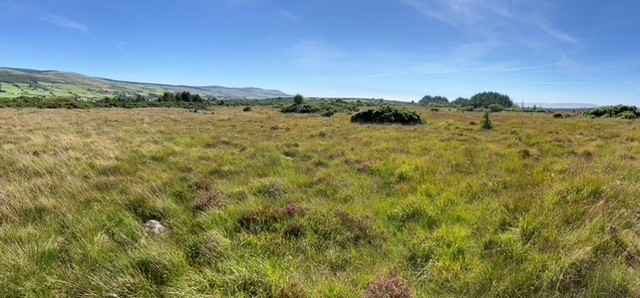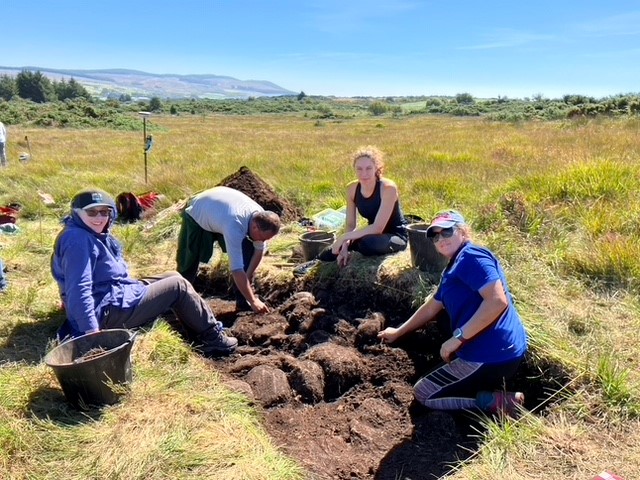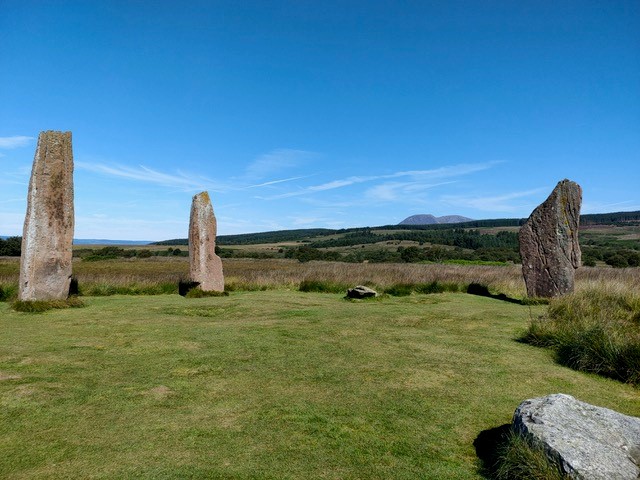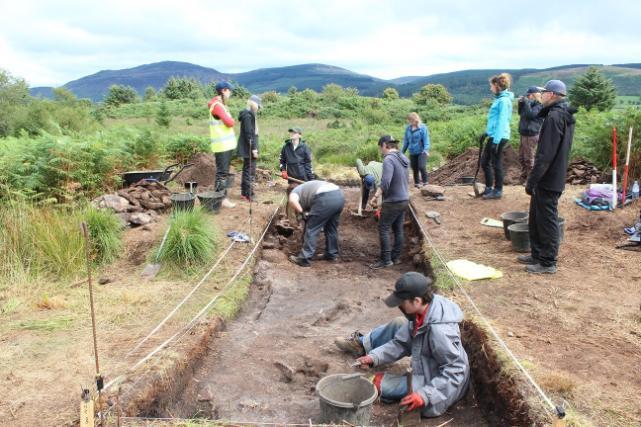New NERC funding awarded to the Prehistoric Drumadoon Landscape and Cursus project, Isle of Arran, Scotland
Published: 4 July 2023
Funding for 29 new radiocarbon dates has been awarded to Prof Nicki Whitehouse, Dr Kenny Brophy, Dr Philippa Ashough (SUERC), Dr Emma Jenkins (Bournemouth), Dr Darko Maricevic (University of Reading), Dr Sarah Elliot (University of Bournemouth) and Dr Philip Barratt (University of Nottingham)
Funding for 29 new radiocarbon dates has been awarded to Prof Nicki Whitehouse, Dr Kenny Brophy, Dr Philippa Ashough (SUERC), Dr Emma Jenkins (Bournemouth), Dr Darko Maricevic (University of Reading), Dr Sarah Elliot (University of Bournemouth) and Dr Philip Barratt (University of Nottingham) by the NEIF Committee, representing £14,203 of NERC ‘grant in kind’ funding towards the research. The funding is via a National Environmental Isotope Facility (NEIF) award - more information about NEIF.
The funding will allow a detailed and robust chronology of this important prehistoric landscape at Drumadoon, including a Neolithic cursus monument, and an associated prehistoric field system and cultivation soils at Drumadoon, island of Arran, North Ayrshire, Scotland. Drumadoon is located within the Shiskine Valley, north of the current settlement of Blackwaterfoot, close to the famous Machrie Moor ritual landscape.
Machrie Moor is well known for its seven stone and timber circles of Neolithic date and is a location of major ritual significance in the Arran Neolithic landscape. Arran has one of the greatest concentrations of Neolithic (c 3800-2500 cal BC) monuments in Scotland and recent survey of LIDAR data by Historic Environment Scotland has produced further evidence for a range of new archaeological sites and anomalies. Perhaps the most important has been the discovery of a potential cursus monument (an early Neolithic rectangular ceremonial enclosure) at Drumadoon Farm, which is now undergoing excavations led by the University of Glasgow, alongside examination of associated field systems and domestic structures, embedded within a peatland landscape.
The new radiocarbon dates will fund dates to understand the chronology of both the cursus monument excavated thus far, plus an associated field boundary, also likely of prehistoric age. Associated with the monuments and preserved the peats are extensive prehistoric anthropogenic soils, most likely associated with usage of this landscape during prehistoric times. The chronological work will use conventional charcoal and novel ramped oxidation dating of the soils in combination to date the deposits. Ramped oxidation (RO) involves progressive conversion of sample organic carbon to CO2 on the basis of its thermal resistance and is increasingly used in a host of environments to separate organic carbon from samples for 14C measurement, particularly where traditional dating targets are absent. This research will involve close collaboration with SUERC (Dr Philippa Ashough) and will allow not only an initial chronology of the sites to be established, but will also generate new research around the dating of archaeological soils.
The project at the University of Glasgow is led by Dr Kenny Brophy, with landscape and environmental components led by Prof Whitehouse, with researchers from the Universities of Bournemouth, Reading, Coventry and Birmingham also involved. Landscape history and community engagement aspects of the project are being delivered in partnership with Dr Gavin MacGregor and his team at Archaeology Scotland, Dr Lesley MacFadyen of Birkbeck University of London, and landowner David Bennett of Drumadoon Farm. This project is part of the Awakening Sleeping Giants initiative.




First published: 4 July 2023
<< 2023

